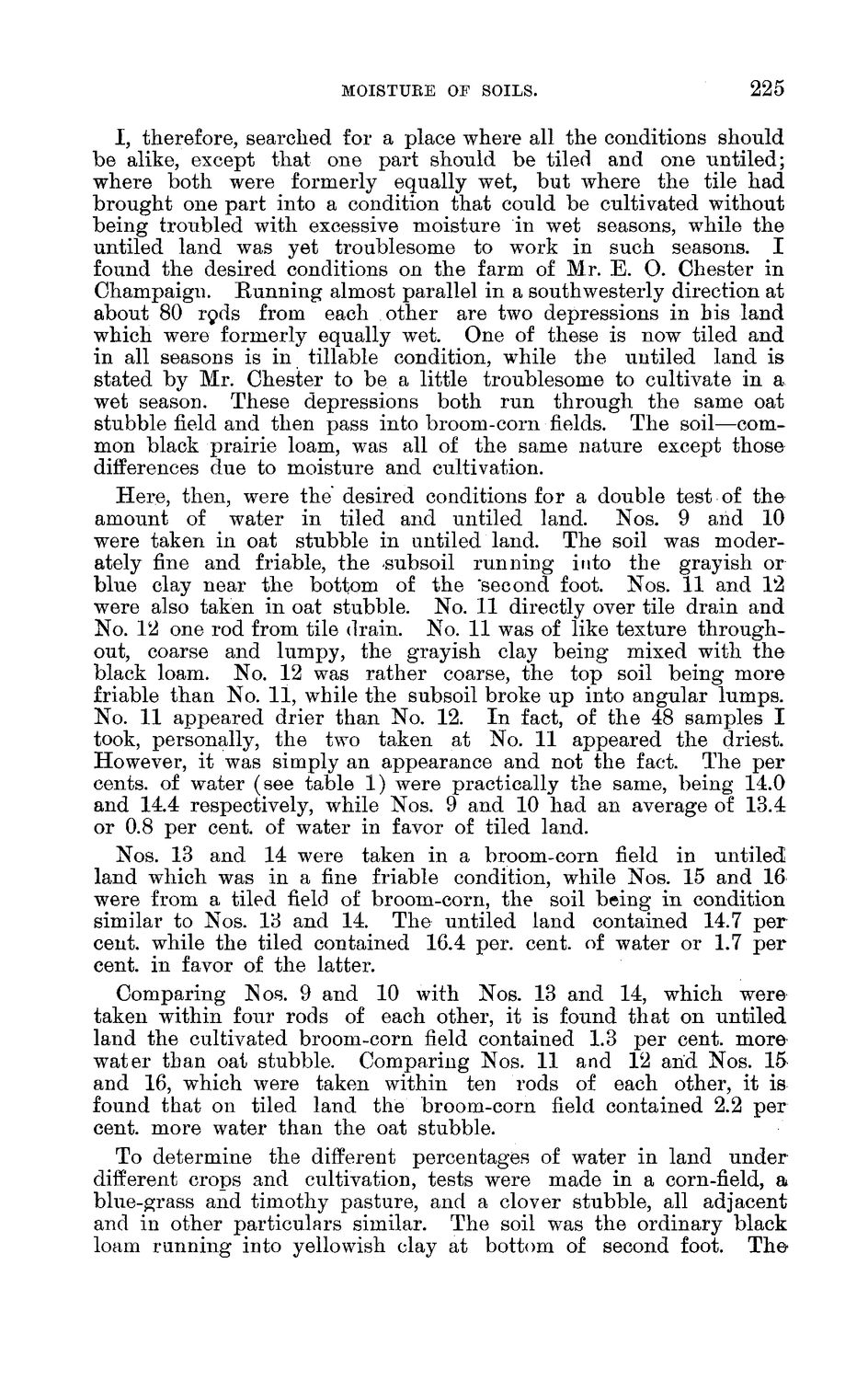| |
| |
Caption: Board of Trustees Minutes - 1888
This is a reduced-resolution page image for fast online browsing.

EXTRACTED TEXT FROM PAGE:
M0ISTUEE OF SOILS. 225 I, therefore, searched for a place where all the conditions should be alike, except that one part should be tiled and one untiled; where both were formerly equally wet, but where the tile had brought one part into a condition that could be cultivated without being troubled with excessive moisture in wet seasons, while the untiled land was yet troublesome to work in such seasons. I found the desired conditions on the farm of Mr. E. O. Chester in Champaign. Running almost parallel in a southwesterly direction at about 80 rods from each other are two depressions in his land which were formerly equally wet. One of these is now tiled and in all seasons is in tillable condition, while the untiled land is stated by Mr. Chester to be a little troublesome to cultivate in a wet season. These depressions both run through the same oat stubble field and then pass into broom-corn fields. The soil—common black prairie loam, was all of the same nature except those differences due to moisture and cultivation. Here, then, were the desired conditions for a double test of the amount of water in tiled and untiled land. Nos. 9 and 10 were taken in oat stubble in untiled land. The soil was moderately fine and friable, the subsoil running into the grayish or blue clay near the bottom of the "second foot. Nos. 11 and 12 were also taken in oat stubble. No. 11 directly over tile drain and No. 12 one rod from tile drain. No. 11 was of like texture throughout, coarse and lumpy, the grayish clay being mixed with the black loam. No. 12 was rather coarse, the top soil being more friable than No. 11, while the subsoil broke up into angular lumps. No. 11 appeared drier than No. 12. I n fact, of the 48 samples I took, personally, the two taken at No. 11 appeared the driest. However, it was simply an appearance and not the fact. The per cents, of water (see table 1) were practically the same, being 14.0 and 14.4 respectively, while Nos. 9 and 10 had an average of 13.4 or 0.8 per cent, of water in favor of tiled land. Nos. 13 and 14 were taken in a broom-corn field in untiled land which was in a fine friable condition, while Nos. 15 and 16 were from a tiled field of broom-corn, the soil being in condition similar to Nos. 13 and 14. The untiled land contained 14.7 per cent, while the tiled contained 16.4 per. cent, of water or 1.7 per cent, in favor of the latter. Comparing Nos. 9 and 10 with Nos. 13 and 14, which were taken within four rods of each other, it is found that on untiled land the cultivated broom-corn field contained 1.3 per cent, more water than oat stubble. Comparing Nos. 11 and 12 arid Nos. 15 and 16, which were taken within ten rods of each other, it is found that on tiled land the broom-corn field contained 2.2 per cent, more water than the oat stubble. To determine the different percentages of water in land under different crops and cultivation, tests were made in a corn-field, a blue-grass and timothy pasture, and a clover stubble, all adjacent and in other particulars similar. The soil was the ordinary black loam running into yellowish clay at bottom of second foot. The
| |